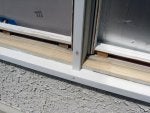I'm sure it's possible. I'm doing it. I just can't do it without a little bit of tweaking by hand. The problem is the 1/2" bend where the brick meets the jamb and 1/2" of the jamb is visible.
I start on the outside edge at 1", then use a roller for the profile, and so on till I get to the 1/2" bend. But the piece stops at 3/4" in and can't go to 1/2".
My method is to leave the last bend angled a bit which lets me slide the piece in farther but then the only way to finish the angled bend is by hand.
Any help would be greatly appreciated.
![]()
I start on the outside edge at 1", then use a roller for the profile, and so on till I get to the 1/2" bend. But the piece stops at 3/4" in and can't go to 1/2".
My method is to leave the last bend angled a bit which lets me slide the piece in farther but then the only way to finish the angled bend is by hand.
Any help would be greatly appreciated.











